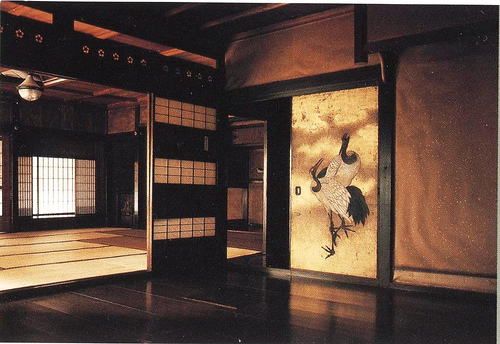Hiro and I lag behind the Japanese-speaking tour group being led through Nijo-jinya. They don’t seem to mind and aren’t making any overtures for us to hurry up or join them. Great. No need to feel rushed or obliged to keep up. Nor do we have to worry about seeming rude. Our conversation in English won’t bother them.
I’ve always wanted to see Nijo-jinya since reading about the Edo period (1603-1867) inn. It’s equipped with state-of-the-art security devices of that era—secret passages, hidden staircases, false walls—to protect the feudal lords who stayed there. As it is now a private residence, all visitors to Nijo-jinya must make reservations for scheduled tours.
Anyone who does not understand Japanese must be accompanied by an interpreter. Hiro, a member of International Service Club Kyoto who has become a friend, has arranged the booking.
After the Japanese-speaking group moves out of sight, Hiro shows me everything: opens trap-doors and secret closets, points out escape routes and spots from which spies could eavesdrop or assassinate. Through a gap between doors we nudge slightly for a better look, we glimpse a family TV room. Oops. No doubt we’re probably peeking into private things we shouldn’t. I get a real feeling for what it might have been like sneaking about in the olden days.
A stunning pair of cranes (symbols of good fortune, long life and marital fidelity) on the fusuma (sliding door) is one of those random, breath-arresting moments that happens now and again. (Inexplicably, those seem to happen more frequently and with greater intensity for me in Japan than elsewhere.)
I remember the painting—its burnished gold foil against dark floors—in vivid detail long afterwards. Each time I do, something inside me constricts with the spell of that moment.
Hiro waits patiently as I linger, examine the composition and marvel at its perfect setting in the shadowed room. I am deeply affected by the harmony of dark wood and gold leaf. Golden echoes in the shoji and reflected from the floors are perfect examples of what Junichiro Tanizaki argues in his essay In Praise of Shadows: …here in the darkness immutable tranquility holds sway.
See more of Steve Beimel’s work on his blog Japan Living Arts.

